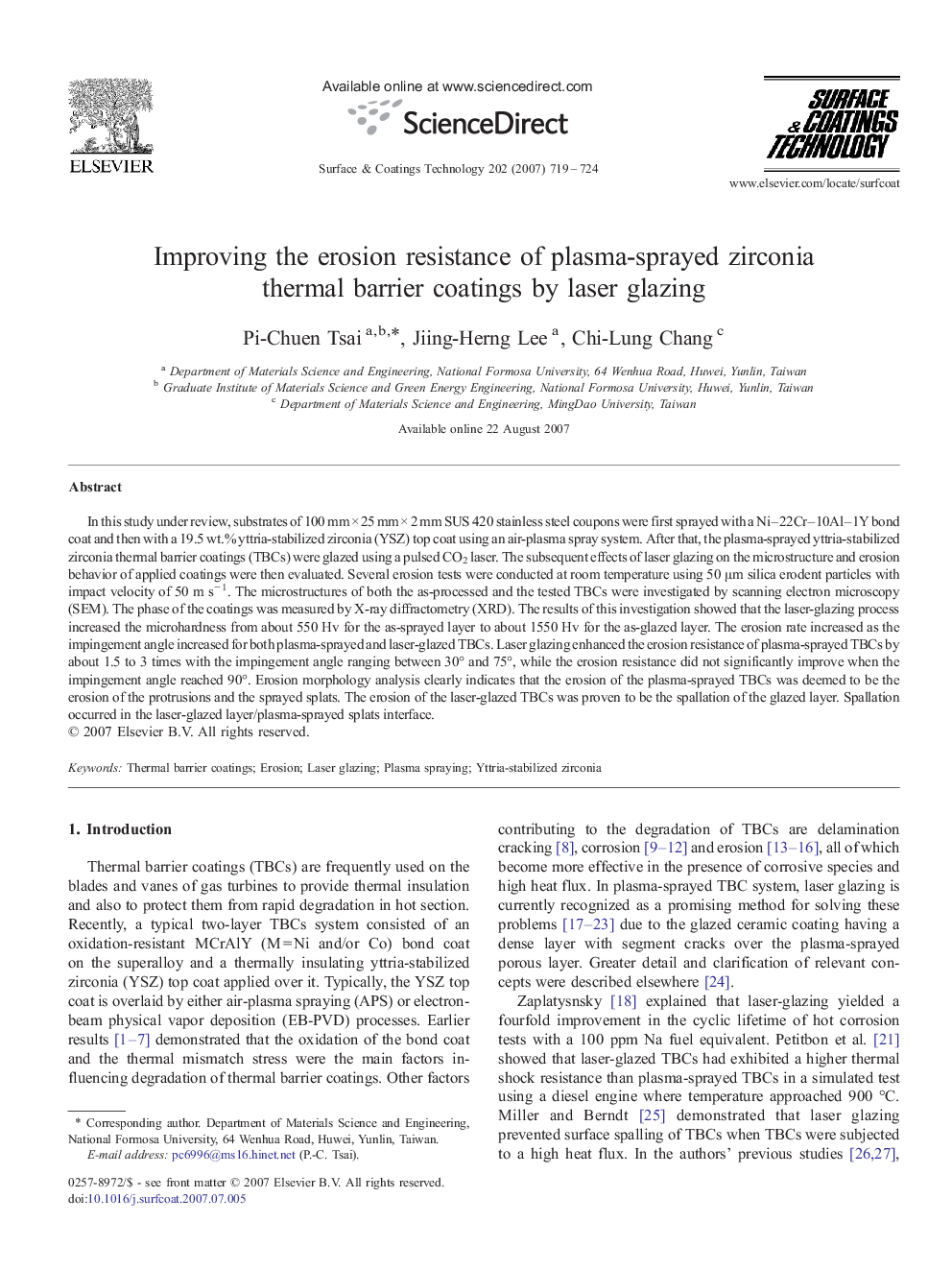| Article ID | Journal | Published Year | Pages | File Type |
|---|---|---|---|---|
| 1661654 | Surface and Coatings Technology | 2007 | 6 Pages |
Abstract
In this study under review, substrates of 100 mm Ã 25 mm Ã 2 mm SUS 420 stainless steel coupons were first sprayed with a Ni-22Cr-10Al-1Y bond coat and then with a 19.5 wt.% yttria-stabilized zirconia (YSZ) top coat using an air-plasma spray system. After that, the plasma-sprayed yttria-stabilized zirconia thermal barrier coatings (TBCs) were glazed using a pulsed CO2 laser. The subsequent effects of laser glazing on the microstructure and erosion behavior of applied coatings were then evaluated. Several erosion tests were conducted at room temperature using 50 μm silica erodent particles with impact velocity of 50 m sâ 1. The microstructures of both the as-processed and the tested TBCs were investigated by scanning electron microscopy (SEM). The phase of the coatings was measured by X-ray diffractometry (XRD). The results of this investigation showed that the laser-glazing process increased the microhardness from about 550 Hv for the as-sprayed layer to about 1550 Hv for the as-glazed layer. The erosion rate increased as the impingement angle increased for both plasma-sprayed and laser-glazed TBCs. Laser glazing enhanced the erosion resistance of plasma-sprayed TBCs by about 1.5 to 3 times with the impingement angle ranging between 30° and 75°, while the erosion resistance did not significantly improve when the impingement angle reached 90°. Erosion morphology analysis clearly indicates that the erosion of the plasma-sprayed TBCs was deemed to be the erosion of the protrusions and the sprayed splats. The erosion of the laser-glazed TBCs was proven to be the spallation of the glazed layer. Spallation occurred in the laser-glazed layer/plasma-sprayed splats interface.
Related Topics
Physical Sciences and Engineering
Materials Science
Nanotechnology
Authors
Pi-Chuen Tsai, Jiing-Herng Lee, Chi-Lung Chang,
